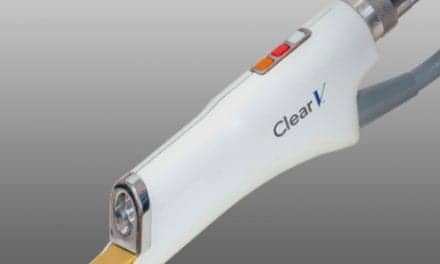 |
Prospective aesthetic patients are well educated on procedures, so when they call you for additional information they want answers—and right this second.
If they experience an intelligent and informative conversation with your receptionist, these callers will become cash-paying patients who stay loyal to you and will refer their friends.
Do you have the right person at the front desk? The receptionist plays one of the most pivotal roles in an aesthetic practice. This employee has the power to answer the telephone in such a way as to turn that caller into a loyal patient who returns again and again. They also have the power to lose potentially tens of thousands of dollars’ worth of services for that caller and lost referral revenues.
It comes down to what is said. Prospective patients will never meet you and other staff members if they don’t have a good experience on their first telephone call to your practice.
The telephone is not a distraction, interruption, or nuisance. It is the gateway to your practice and the door to new patients who are interested in learning more about you and your services. It’s also a friendly haven for your returning patients who want to see you again.
Be sure your receptionist answers the telephone with a smile. It doesn’t cost anything and the results can be amazing, but you have to be aware of what is happening at the front desk and take control of what is said to patients.
The greeting will set the tone for the entire discussion. Make it personal, and promote one of your services at the same time. For example,
“Hello. Dr. Smith’s office, now offering the weekend facelift, Catherine speaking. How may I help you?”
Adding those simple five words didn’t cost you a dime, they took 3 seconds, and the results could be worth thousands of dollars to you.
TRACKING AND GATHERING CALLER INFORMATION
It is important to obtain accurate tracking records so you know how the prospective patients are learning about your practice, what they are interested in, your closing ratio, and so on.
Knowing why the prospective patient called you in the first place will help you determine how to move forward with the call. For example, if the caller says her sister recently got liposuction from you and now wants the same is a much different telephone conversation from a caller who wanders onto your Web site and asks about your services. To find out how to proceed, simply ask. For example,
“I’d be happy to answer your questions, Sara, but first can you tell me how you heard about us?”
ATTEMPT TO CLOSE
Every call to your practice should be treated as a hot lead.
A prospective patient who took time out of her busy day to call you is typically an interested prospect for your aesthetic services. Therefore, treat each of these calls as a hot lead and ask to schedule an appointment. For example,
“OK, Sara. I can help you with that. Do you have a specific question I can answer, or did you want to schedule some time with the doctor?”
POSITIONING THE PHYSICIAN
The receptionist should sprinkle your name throughout the conversation, and include bullet points about your credentials and what makes your practice different from the competition. The goal is to entice the prospective client to choose you over any other office she may call.
Talking Points
- Your front desk may be holding tens of thousands of dollars in untapped profits.
- With the right attitude, scripts, and encouragement and practice, your receptionist can become a major profit center in an aesthetic practice.
- Give your receptionist an actual script to work from, as well as specific processes and approaches to use with prospective patients.
- Give the receptionist incentives to succeed, and don’t put up with mediocre performance.
This result does not happen by accident—it must be scripted and well timed. For instance, many times the patient just wants reassurance that the physician is a good egg and she will be satisfied with her result. The following response is effective:
“Sara, you’ll be happy to know that the doctor has performed more than 300 of these procedures with excellent results. Why don’t you visit us and view the before/after photos, and you can even watch short videos of patient stories so you can learn more about it straight from patients who have experienced this procedure? Is there a particular day of the week you prefer?”
QUOTING PRICES FOR MINIMALLY INVASIVE PROCEDURES
Some patients today believe minimally invasive procedures such as Botox, wrinkle fillers, and laser procedures are commodities that should be available at commodity prices. They don’t see any difference between you and your competitors. However, if that were true then price would be the only factor to consider—but it never is.
The challenge you have with quoting pricing over the telephone is that the caller may be only concerned about price because she has nothing to compare. It is the job of the receptionist to introduce and inform the caller about factors other than price.
For example, tell the caller what the price entails and why your practice is the right choice for her before revealing the price. For example,
“Sara, our wrinkle filler price includes a nerve block so you don’t feel any pain, an ice pack you take home with you to help reduce any swelling you may get, and we guarantee less than a 15-minute wait all for only $450. How does that sound?”
Frequently, the caller just wants to be sure you are competitively priced. Save her some time from shopping around by simply saying the following:
“Sara, we are competitively priced with the other board-certified plastic surgeons in the area, and you can be sure you’ll be happy with your result since the doctor personally does his own Botox and wrinkle injections.”
 |
Another pricing strategy is to buffer pricing with a sense of comparison to something else so the prospective patient has some frame of reference. For example,
“You’ll be happy to know we just got in the latest, state-of-the-art equipment that is five times faster than the older technology—and it’s painless. It’s also cheaper than the old technology, so a treatment we used to charge $1,500 for is now only $950.”
QUOTING PRICES FOR BIG-TICKET SURGICAL PROCEDURES
Although you don’t want to quote prices over the telephone, today’s aesthetic patient wants that information and will not be easily dismissed. You might as well prepare for this inevitability, and the best way to deal with it is to explain pricing to keep the call moving along and to book an appointment.
Use price ranges when quoting surgical procedures. Don’t lock yourself in to the quoted price, but provide the caller with some information as well as options. For example,
“The doctor would have to see you to determine exactly what needs to be done and quote you an exact fee. But here’s an idea of what you can expect. The fee would include his surgical fees, the operating room costs, the anesthesiologist’s fees, the necessary lab work, and the postoperative garments. All of that would range from X to X dollars, or it can start at such-and-such per month if you use our affordable financing option.”
CONSULTATION FEE
If you charge a consultation fee, be sure the patient understands the parameters so there are no surprises when she gets to your office. Avoiding misunderstandings about money is key to good patient relations and word-of-mouth referrals. For example,
“Sara, let me explain our process. The consultation includes an initial consultation with Peggy, our patient care coordinator. She can go over your personal situation and learn about your concerns. She will discuss the basics with you to determine your needs. She will also tell you more about our practice, our patients, and the doctor.
“You will then have a computer imaging session to determine your particular concerns and possible outcomes.
“The doctor will then examine you and talk with you personally about your concerns, as well as solutions he recommends. You will then return to Peggy to go over any other questions you may have and, at that time, she will discuss financial options with you and possible surgical dates.
“The entire process takes from 45 to 60 minutes and costs $150. By the way, if you book a procedure within 30 days, the $150 goes toward it. Shall I look for a certain day and time for you, or just give you our next available appointment?”
WHEN THE CALLER ASKS ABOUT PAIN
When interviewing patients, anticipate that the subject of pain will come up often. Patients remember the feeling of the jabs, pricks, and heat from their last treatment, and they are not anxious to repeat it. When the caller asks, “Will it hurt?” the response can be as follows:
“Other patients have told me it felt kind of like a rubber band sting, but it was quite tolerable. The doctor does everything he can to ensure you are comfortable during the procedure.”
Or,
“Well, Sara, I can tell you that I’ve had it done, and I’m a big baby and it wasn’t bad at all.”
Downtime is a big topic for prospective patients and should be addressed realistically and pragmatically. For example,
“There’s always a chance of bruising and swelling for the first 2 to 3 days, so if we have to, we’ll show you how camouflaging makeup conceals it so you can go back to work right away.”
Or,
“Well, I can tell you four out of five of our patients return to work within 1 week, and a few take a bit longer.”
They now know it should take about 1 week to recover and, if it takes longer, they won’t be surprised because they will be the one out of five who took a bit longer to heal.
 |
WHEN THE CALLER ASKS ABOUT SAFETY
The caller is looking for reassurance she will not have a bad experience and regret her decision to move forward with your recommendations. A good response is to say, “Yes” or “Absolutely.”
“Although there are risks associated with any medical procedure, today’s technology is extremely precise and safe. When you come in for your evaluation, we’ll go over all of that with you so you are well informed. Shall I look for possible days and times you can visit us?”
BRAND NAMES
Many aesthetic medicine product vendors have invested heavily in consumer awareness of their particular technologies. That means you’ll get telephone calls asking for a particular procedure by name.
If you offer it, great. But if you don’t, all is not lost.
There is still an opportunity to turn the caller into a new patient if your receptionist is prepared with an answer. For example, what if a prospective patient calls in and asks if you do the procedure they saw Kathie Lee Gifford get on her morning television show or the treatment that Oprah talked about?
“Yes, I’ve heard of that, and the doctor did careful research on that procedure, as well as other technologies talked about at the medical meetings he attends. While he found that specific procedure to be good, he found such-and-such procedure to be even better. If you want to learn more, the doctor could explain it to you this Friday at 3 pm. Or, would next Tuesday at 10 am work better for you?”
CONVERTING A CALL TO AN APPOINTMENT
This one skill is the most important one for an employee to master, and is the one that will separate an average receptionist from an exceptional receptionist.
The receptionist’s primary objective is to book appointments. This task may take up to four attempts before success is attained. The best results require that the receptionist keep it conversational.
A successful “close” can be as simple as asking that one extra question in a creative way. For example, rather than ask yes/no questions, such as, “Would you like to schedule an appointment?” try getting the patient to decide when she should visit, not if. For example,
“Sara, I know the doctor would like to examine you and show you before-and-after photos of great results our other patients have seen. He happens to be available this Friday at 2 pm, or would next Tuesday morning at 10 work better for you?”
Or,
“Let’s first see what the schedule looks like to give you some idea of when you could visit us. Do you prefer morning or afternoon appointments?”
Or,
“Is there a certain day of the week that works better for you, or should I just tell you our next available appointment?”
Or,
“Sara, the best place to start is a consultation with the doctor. That way, you can have all of your individual questions answered. You can see our facility, meet the doctor and the staff, and talk to other patients. Let’s go ahead and schedule a day and time for you to come in and visit with us. How about this Thursday at 3 pm, or would Friday at 10 am work better for you?”
| |
See also “Welcome to the New Playground” by Catherine Maley, MBA, in the July 2009 issue of PSP. |
|
plasticsurgerypractice.com |
|
If, in the end, your receptionist cannot book the consultation, and you may have done everything right but the patient is just not ready—for whatever reason—then don’t take it personally.
In response to the prospective client who is just saying not now or not yet, make sure you collect as much of her contact information as possible. Then stay in touch. Follow up. Try to be there when she is ready. For example,
“Sara, I have an idea. We have an open house coming up next month. These are always fun events in our office because we serve wine and food, give away samples, the doctor gives mini presentations, and we have very special pricing that evening only. If you’re interested, can I mail or e-mail you an invitation?”
CONCLUSION
With the right attitude, scripts, and encouragement and practice, your receptionist can become a major profit center in an aesthetic practice.
When you or your office manager trains the receptionist in proven strategies and exact words to say to the aesthetic patient, the results will help your staff bond with the patient, qualify them, and book the procedures.
Catherine Maley, MBA, is the president of Cosmetic Image Marketing, a public relations, advertising, and marketing firm that specializes in helping aesthetic practices grow. She can be reached at (415) 377-8700 or .





